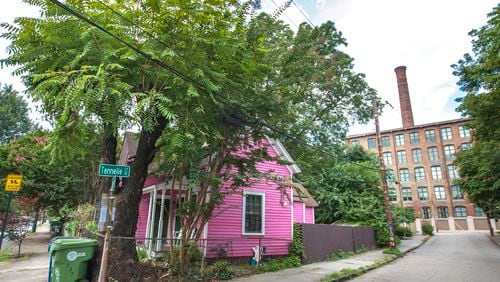With a potentially transformative Election Day in Atlanta at hand, now is the time to make clear our expectations for our new mayor, city council and school board. New blood offers an opportunity for new ideas. Here’s just one.
Most people don’t care about the city-wide crime rate; they care whether their street is safe. They don’t care about how the Atlanta Public Schools (APS) are doing; they care about the elementary school their kids attend. They don’t care about the number of affordable housing units there are in the city; they care about whether they will be able to afford a home in their neighborhood. They don’t care about the city’s total greenspace; they care about maintaining the park up the street. In other words, the product we “buy” as citizens is our neighborhood, so local government should be in the “neighborhood” business.
We recently hosted 500 people from around the country at our Purpose Built Communities annual conference to discuss turning distressed neighborhoods into healthy ones. Two of the 18 projects we have underway nationally are in Atlanta – in East Lake and in Grove Park. Together with the work of Purpose Built Schools in Thomasville Heights and the efforts of the Westside Future Fund in the neighborhoods surrounding the new football stadium, Atlanta can confidently claim that we are leading a national movement to break the cycle of intergenerational poverty through neighborhood revitalization.
Central to this work is recognizing that place matters. The research is clear: the neurological and physiological development of children is directly impacted by the quality of the neighborhood in which they live.
All of the outcomes that we worry about in Atlanta – low-performing schools, high crime, and poor health – are correlated with geography. If we can turn unhealthy neighborhoods into healthy ones, we will become a healthy city in which every child will have an equal opportunity to live a happy and prosperous life.
The well-documented inequities in Atlanta are almost entirely a consequence of a set of mal-intended public policies and private practices that have isolated mostly low-income African Americans into neighborhoods of high distress. Residential housing segregation is arguably the most successful public policy of the 20th century, and it falls upon this generation of public and private leaders to reverse its degradative impact.
Creating private-public partnerships focused on implementing customized strategic interventions is the most effective means for turning unhealthy neighborhoods into healthy ones. These interventions must be organized by a “community quarterback” organization focused on a single neighborhood. The East Lake Foundation, the Grove Park Foundation and the Westside Future Fund are examples in Atlanta. These organizations braid the desires of the neighborhood residents and the partners who can deliver transformative investments with the public and private funding needed to finance them.
These interventions typically include new mixed-income housing developments intended to increase the quality of housing while protecting future affordability, cradle-to-college education investments to ensure that every child from birth to high school graduation has access to an A-plus school, and community wellness investments such as YMCAs, health clinics, parks and transportation infrastructure.
This may sound expensive, but the vast majority of this money is already being spent. But it is being spent in silos and not as part of neighborhood transformation investments. APS is investing in school buildings, the city is investing in public infrastructure, Invest Atlanta is investing in economic development, and philanthropists are investing in distressed neighborhoods. They should be making these investments in a coordinated fashion under the guidance of a community quarterback.
I hope our candidates for mayor, city council and the school board will embrace this approach to achieving the goals we know they all want to achieve. When candidates come knocking on your door, ask them about their strategy for your neighborhood. After all, don’t we simply want everyone to live in healthy, thriving and prosperous neighborhoods?






